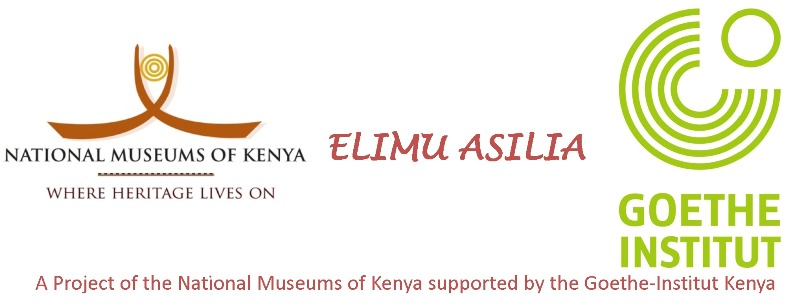 |
| Samson Karisa, Malindi high School. Assisted by Sidi Mwavita |
The
bridegroom is accompanied by friends and cousins to come and meets the bride.
When they get there, the bride says that he has been sent by his father to come
and pay a visit to the village. The father-in-law understands and calls for his
daughter to bring some water to the visitors. The bridegroom is not necessarily
thirsty but takes the opportunity to make the bride stay there for sometimes so
that he can observe her physical features. When contented the bridegroom tells
the grandma of the bride that”mautin ni toto”-meaning he is pleased.
The bride and the bridegroom are put in one
room so that they can introduce to one another and this is how it goes-: They
tell their names first then:”Nidzire haha henu Kwa sababu nidza fahirwa ni nne,
je unnambadze?”-I have come to your home because I have a passion for you, what
do you say about that? The bride may decide to conceal her feelings-“sidzihisi
ma mtu yoyosi mino” I do not feel for anybody. The bridegroom goes on
persuading her”Mwanzangu umudzo zhomu ma mahedzu niknhale fukale hammenga siku
zosi”My friend you are so cute and I wish I marry you we be together for the
rest of our lives. The bride shrugs her shoulders meaning that she has agreed but
can say it verbally. The bridegroom stands and hugs the bride then he goes out
the house. He tells the grandma that things are okay and they leave. The bride
groom tells his parents he is pleased and procedures follow.
The parents
of the bridegroom go to the bride to discus dowry. The parents of the bride
asks for”ndama”bull and”kadzama mirongomiri na nane”eight liters of liquor
(mnazi) that will be sent twenty eight times. A day for giving the bull and the
liquor is planned, the visitors go to
the bride and a ceremony is held. This time they take the bride with them. They
sing and dance. The main song is”Nangoza mwanangu, dama mwanaanenda, zho
kwaatu, anenda kwamulumewee…dede, mudzungu wa utsunguni nau hambale”meaning Iam
nursing my daughter dama,the daughter is going to peoples home, to her husband,
my dear the cucumber of pain let it spread. “The father in law asks for a
blanket as a gift to bless the couple. The mother in-laws for an”mkamba wa
kurekeketa mwana”The kanga for carrying the baby. The bride is blessed and
asked to agree with all that her husband tells her .The father in law takes
water and swirls in his mouth then blows it on the chest of the bride and the
bride groom. The mother in law does the same. The bride groom is told that the
bride is not a ball for him to beat all the time, he is advised to protect the
bride in happiness and in problems.
The
visitors leave the home of the bride with a thigh of a goat to the bridegroom’s
home. They are supposed to go on foot irrespective of how long it may be. When the
couple reaches at the bridegroom’s home, they first enter the house of the
bride groom parents. Water is poured on top of the makuti and are asked to come
out as it dripples on them. The parents say –“zizimwani mimwiri”let your body relax.
The couple then goes to the house of the bride groom, the first day at the bride grooms home is called”kikutamanina”-shading
dews. Several chicken are slaughtered and mnazi is brought a lot for people at
home to drink and seep. The bridegroom sleeps at another house while the bride
sleeps with her sisters and cousins at the bridegroom’s house. The second day
goats are slaughtered and people keeps on celebrating. On the third day, the
relatives of the bride go back and leave the village with a goat’s thigh. The
couple starts life.












.jpg)
